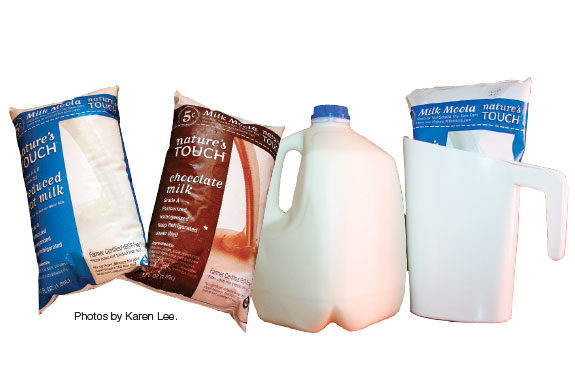Milk is milk, but when it comes to what consumers reach for in the dairy case, packaging matters. Suley Muratoglu, vice president of marketing and product development, Tetra Pak Inc., a food processing and packaging solutions company, says, “Packaging type is determined by both processor needs and consumer needs and trends.
“Over the last decade, shifting economies and demographics have led consumers and food manufacturers to seek solutions that consider safety, lifestyle choices and environmental impacts as the key drivers of new technologies,” Muratoglu adds.
Three of the top trends he is tracking are:
1. Increasing focus on the power of space and imagery – Options that are both individually enticing and add to the overall efficiency of the shelf space will do well in today’s market, he says.
2. Increasing need for environmental efficiency – According to Muratoglu, recent data from Tetra Pak’s “Environmental Research 2011” survey shows 88 percent of consumers in 10 countries expressed a preference for products in recyclable packaging.
In the U.S. alone, 70 percent of the survey’s respondents said they are willing to buy “green” products if the quality were the same as “non-green” alternatives.
3. Increasing need for product innovation – He explains innovation in dairy means adapting to the changing behaviors and demands of consumers, retailers, suppliers and producers at every stage in the dairy chain.
“Consumers today want smaller packaging sizes and greater efficiency. Nearly 60 percent of households in the U.S. are comprised of one or two individuals and more and more we are seeing convenience, size, ease of storage and disposal drive consumers toward the need for greater efficiency in their day-to-day lives,” Muratoglu says.
One solution for easier handling, more efficient shelf space, being environmentally friendly and offered in a smaller size is milk sold in plastic bags.
Kwik Trip, a line of 400 convenience stores in Iowa, Minnesota and Wisconsin with its own processing facility, sells milk in half-gallon plastic bags as well as gallon and half-gallon plastic jugs and smaller plastic containers including quart, pint and half-pint.
The company started selling bags as “something to give value to our customer,” says Steve Wrobel from Kwik Trip’s public relations department.
The plastic bags are a cheaper packaging method and the company passes that savings on to the customer. For instance, the savings found on 2 percent milk at one store in southern Wisconsin amounts to 21 cents per gallon.
“Those pennies add up over time,” Wrobel says, noting families with young children and day care centers are two of the biggest consumers of bagged milk.
The store chain acknowledged, however, that it does sell more of its milk through gallon and half-gallon plastic containers, matching the dominant preference of the U.S.
Our neighbors in eastern Canada favor bags and have since the 1970s. There the preferred package is the one-liter chilled bag, sold in packs of three.
Bags of milk can also be found in Europe, India, South Africa and China.
While plastic bags are one option for consumers looking for something smaller and more sustainable, Muratoglu says the market is really missing “a solid single-serve on-the-go offer so that consumers, who are more mobile nowadays than ever before, don’t need to go to other categories to find suitable products for their lifestyle.”
Milk will always be milk, but the options for how it is sold will continually change based upon processor needs and consumer trends. PD

Karen Lee
Editor
Progressive Dairyman








